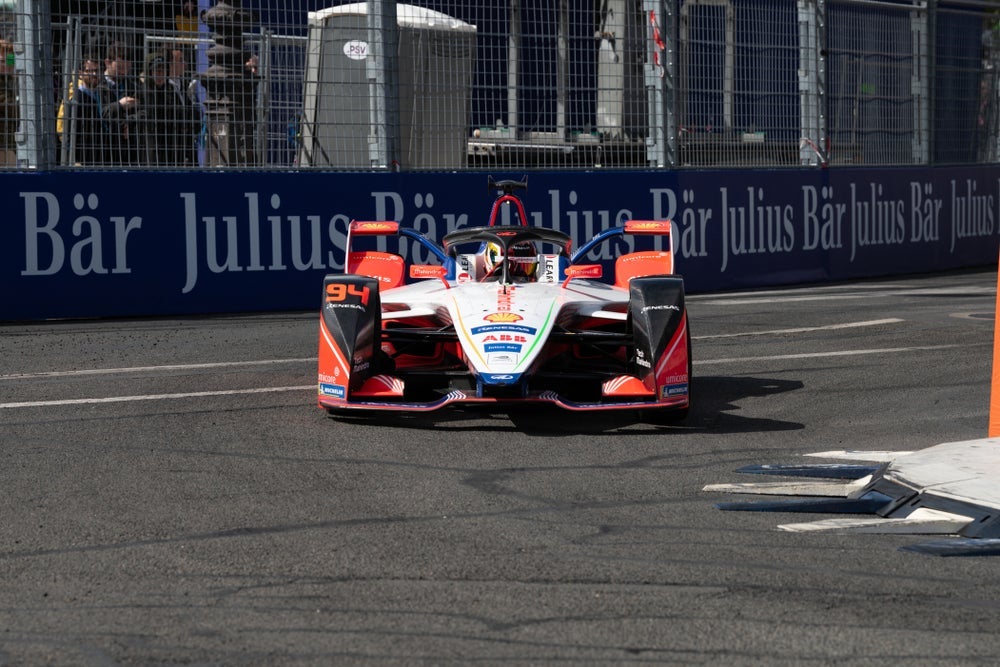Formula One (F1) has long been the jewel in the crown of global motorsport.
Every race weekend, spectators in their hundreds of thousands descend on the race tracks for the weekend, while throughout a season, an estimated 1.5 billion more tune in on their TVs to catch the likes of Max Verstappen and Lewis Hamilton bombing round the circuits at speeds of up to 220 miles per hour. Millions more lap up F1-based content from all the traditional Western media outlets during the breaks between races.
F1’s more environmentally conscious counterpart, Formula E, doesn’t attract anywhere near the same level of fandom, with approximately 225 million TV viewers, live audiences in the tens of thousands, and very little coverage in mainstream Western media. But could this change in the future?
Technological advancements and cost benefits are helping Formula E bridge the gap
The inaugural season of Formula E was held in 2014, and the electrified racing format certainly had to overcome some teething problems to reach its current level. In the first season, the cars’ batteries were not nearly as developed as they are today, and so drivers were forced to swap cars in the middle of the race to be able to go the distance.
Much development has occurred in the ten years since in terms of the range an electric vehicle’s battery can reach, meaning teams can now complete a race without needing to stop.
In addition to becoming lighter and boasting improved range, the batteries’ performance has also drastically improved. Top speeds of 200mph are now being reached, and although this is slower than that of a Formula One car (230mph), Formula E cars are now able to out-accelerate their F1 counterparts, going from 0-60mph in 1.8 seconds. Naturally, technological improvements have drawn greater audiences and investment, including from the current owners of Formula One, Liberty Media.
The associated costs of buying into Formula E compared to F1 also make it a much more attractive proposition for investors. Most F1 teams would sell for more than $1bn, while an annual cost cap of $140m shows the level of continuous investment required. Formula E, on the other hand, imposes a cost cap of $14m on its teams, which generally cost between $25-30m.
A reduced environmental impact compared to F1
Growing environmental pressures have raised questions surrounding the sustainability of motorsport. Formula E cars, of course, produce no emissions, although the emissions avoided throughout a season compared with F1 are still somewhat minimal. Teams in both competitions also face similar issues when it comes to reducing their carbon footprint between races, due to the global nature of the sport and the hundreds of thousands of miles of cumulative travel required each season.
However, Formula E races are held predominantly on street tracks in major cities, improving accessibility for the thousands of spectators at each race, who can reach the locations easily, avoiding any unnecessary emissions. The street circuits also offer a more sustainable way of holding a racing event; the majority of F1 races are held at separate circuits which function permanently as racetracks, so temporarily converting the streets of a city into a track means no more land is built on. The Formula E series is also used as a platform to promote clean energy in major cities around the world, boosting its appeal in an increasingly sustainability-focused world.
A new generation of fans and more competitive races
Formula E is seeing huge growth in Asia, where the production and uptake of electric vehicles has far outpaced all other parts of the world. Thousands attended the Shanghai ePrix on May 25 2024, and the growth to a global fanbase of 385 million has largely been driven by China, Indonesia, and Japan.
The younger generation also forms a large part of this growth due to their tendency to be more environmentally conscious.
Predictable F1
Lastly, the Achilles Heel of F1 in recent years has been its susceptibility to utter domination by a single team or driver. Both Hamilton and Verstappen have won multiple back-to-back World Drivers’ Championships in the last decade, and no other driver has become champion since 2016.
Formula E benefits from the fact that most elements of the cars, such as the chassis and the suspension, are identical, meaning that the vast majority of research and development is focused solely on the powertrains. There is less emphasis on altering the cars’ aerodynamics to improve performance by mere hundredths of a second.
Formula One has an established fanbase of zealous petrolheads, and attempting to win them over may ultimately prove to be futile. But while it may never sit at the same table as the pinnacle of motorsport, the development seen in Formula E in little over a decade suggests that anything is possible.





